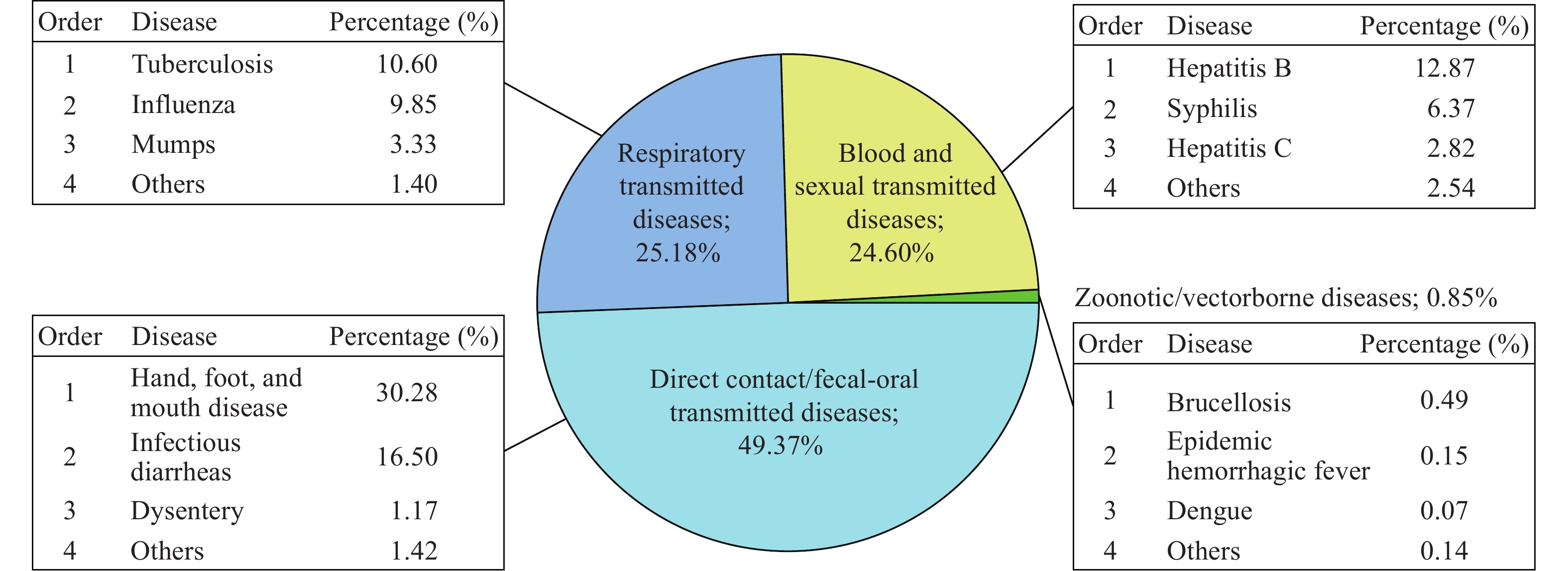2019 Vol. 1, No. 4
What is already known about this topic?
Annual morbidity analysis reports that summarized trends and changing epidemiology for notifiable diseases were published in 2013 and 2015 (1,2).
What is added by this report?
In 2018, the morbidity of national notifiable diseases was 559.41 per 100,000 population, an increase of 12.88% compared with the average rate between 2015–2017. The five notifiable diseases with the highest reported morbidity were hand, foot, and mouth disease (HFMD), infectious diarrhea, hepatitis B, tuberculosis, and influenza. The five regions with the highest reported morbidity of infectious diseases were Zhejiang Province, Guangxi Autonomous Region, Guangdong Province, Beijing Municipality, and Xinjiang Autonomous Region.
What are the implications for public health practice?
Evidence on notifiable disease morbidity trends and changing epidemiology should help disease control and prevention agencies and medical institutions direct their response and prevention efforts. In addition, this report demonstrates the continued need for surveillance systems and high-quality data to identify focal points for disease control.
Almost 100 years after the 1918 influenza pandemic, China experienced its largest, most widespread epidemic of human infections with avian influenza A (H7N9), the influenza virus with the greatest pandemic potential of all influenza viruses assessed to date by the United States Centers for Disease Control and Prevention’s Influenza Risk Assessment Tool. This historical review describes how China was affected by the 1918, 1958, 1968, and 2009 influenza pandemics, records milestones in China’s capacity to detect and respond to influenza threats, and identifies remaining challenges for pandemic preparedness. This review suggests that past influenza pandemics have improved China’s national capabilities such that China has become a global leader in influenza detection and response. Further enhancing China’s pandemic preparedness to address remaining challenges requires government commitment and increased investment in China’s public health and healthcare systems.



 Subscribe for E-mail Alerts
Subscribe for E-mail Alerts CCDC Weekly RSS Feed
CCDC Weekly RSS Feed
